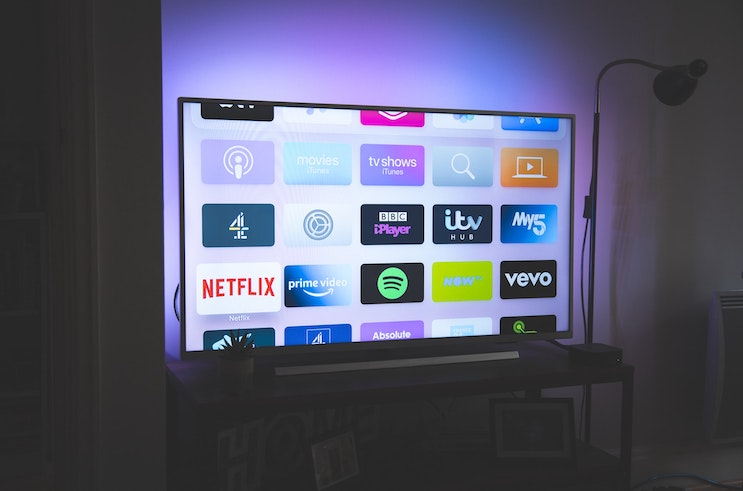Time spent disagreeing over measurement is time wasted

The Trade Desk’s GM of inventory partnerships for EMEA examines the future of measurement with CTV gaining scale and addressability.
Only 20 years ago, the idea of accessing the internet through your television seemed space-age.
Fast forward to today and connected TV (CTV) has taken over most households in the UK. In fact, according to research we conducted at The Trade Desk this year, one in five (19%) Brits now spend over 16 hours – or the equivalent of two working days – watching streaming services every week.
Perhaps a symptom of work from home culture, there’s no denying more eyeballs than ever are fixed on online TV.
Unsurprisingly, a ballooning audience means CTV is rocketing its way to becoming advertising’s most powerful channel.
MoffettNathanson recently reported that in the US alone, the ad-supported video-on-demand market is growing from $4.4bn in 2020 to about $18bn as early as 2025.
In many ways, CTV is an advertising executive’s dream, combining the data-driven benefits of digital with the impact of TV.
The measurement that exists today spans everything from attribution and sentiment to brand lift.
Paired with a linear strategy, a CTV campaign even provides incremental reach, the ultimate ambition of marketers aiming to unlock brand new audiences.
The sticking point: measuring an emerging channel
But so far, measurement of CTV hasn’t fully kept pace with consumption. The means of proving success varies and that can make marketers think twice about the channel.
While understandable, this hesitancy is to their detriment as they run the risk of missing out.
As with any new fast-growing channel, it takes a certain amount of time for measurement to catch up. For industry insiders, it’s clear CTV delivers on its promises but what it lacks is standardisation.
At the end of November 2021, BARB took the significant step of featuring subscription video on demand (SVOD) services on its most watched TV programmes ranking for the first time. Netflix’s Squid Game made the UK’s Top 10 most-watched shows for October and a total of five different streaming services featured in the top 100.
While this recognition of CTV by an industry-leading measurement service marks a key development for SVOD on the journey to universal measurement, what’s still missing is the same recognition for advertising video on demand services (AVOD).
It’s no secret that big names are piling pounds of investment into AVOD. Let’s look at, for example, Viacom taking a big production bet in removing the highly sought-after new Star Trek series from Netflix and making it available exclusively to Pluto TV (an AVOD service) in the UK. Demand is high and it’s high time measurement met that demand.
How do we move forward with measurement and who can lead the way?
A unified measurement solution is on the horizon, but we aren’t there yet. If the industry is to properly harness the potential of this exciting new channel, working towards standardisation must be the key focus in 2022 and beyond.
Let’s make this clear. With CTV, we’re dealing with an emerging channel that carries the inherent characteristics of linear TV in generating reach, but it also has the one-to-one targeting options enjoyed by digital channels.
For a brand or ad agency, the confusion really lies in their need to measure CTV beyond the globally accepted ways that linear is already measured.
And progress is being made. Take, for example, the arrival of C-Flight as a joint-UK broadcaster venture last Summer, a measurement tool which can track an advertiser’s reach across all of broadcast video on demand (BVOD) and linear.
While C-Flight’s remit doesn’t include AVOD yet, it’s set to become the biggest measurement tool out there when it comes to scale.
As we look to take CTV measurement even further, established linear TV metres, like BARB, could take this opportunity to chart the way forward for the industry.
To do that, they need to develop panels which would allow them to maintain their ability to track targeted content by using ACR technology.
Any advertiser in the digital space will expect no less than very detailed measurement, so original equipment manufacturers (OEMS) like Samsung, LG and Sony also have a role to play here in providing some truly original and exciting new measurement data that’s never before been available to the supply chain.
Realistically, no one player can snap its fingers and make this kind of measurement happen overnight – it’s very complex to carry out. For example, another big obstacle standing in our way is the diversity of device IDs that the CTV market provides.
At this point it’s simple: we need a single currency to measure on and to plug new, never-before-used data straight into.
To make unified measurement on CTV a reality by whatever chosen tool, the focus needs to be on bringing players together from the CTV-first side – the likes of Pluto TV and Vudu – with broadcasters, demand-side platforms (DSPs), supply-side platforms (SSPs) and regulators to stand the best chance of cracking this nut.
Solutions within touching distance
From Squid Game to Tiger King, audiences on both sides of the pond now greet new streaming content with more enthusiasm than big-budget cinema releases.
Consumers have grown to expect the privilege of being able to watch what they want, when they want and it’s no surprise that advertising has followed.
With the widespread recognition of CTV as a major marketing channel and new never-before-used data up for grabs, every moment spent in disagreement over measurement, is a moment wasted.
The industry is facing a huge opportunity to redefine what success looks like – and success rests with coordinated collaboration.
Dave Castell is general manager of inventory partnerships (EMEA) at The Trade Desk.



